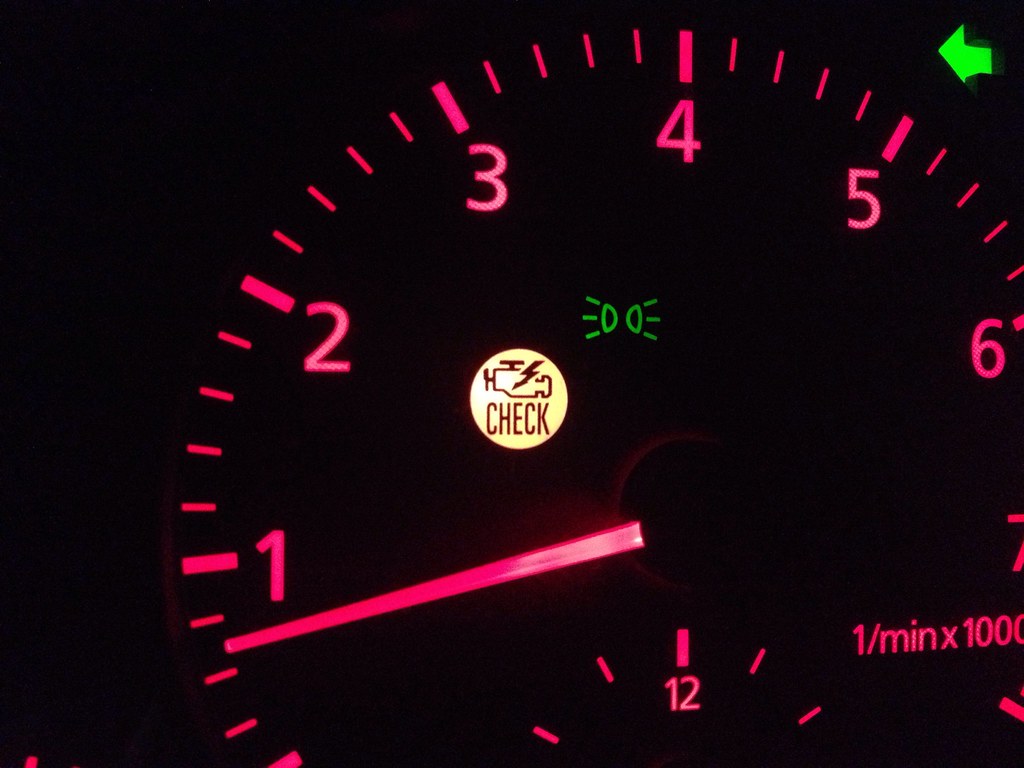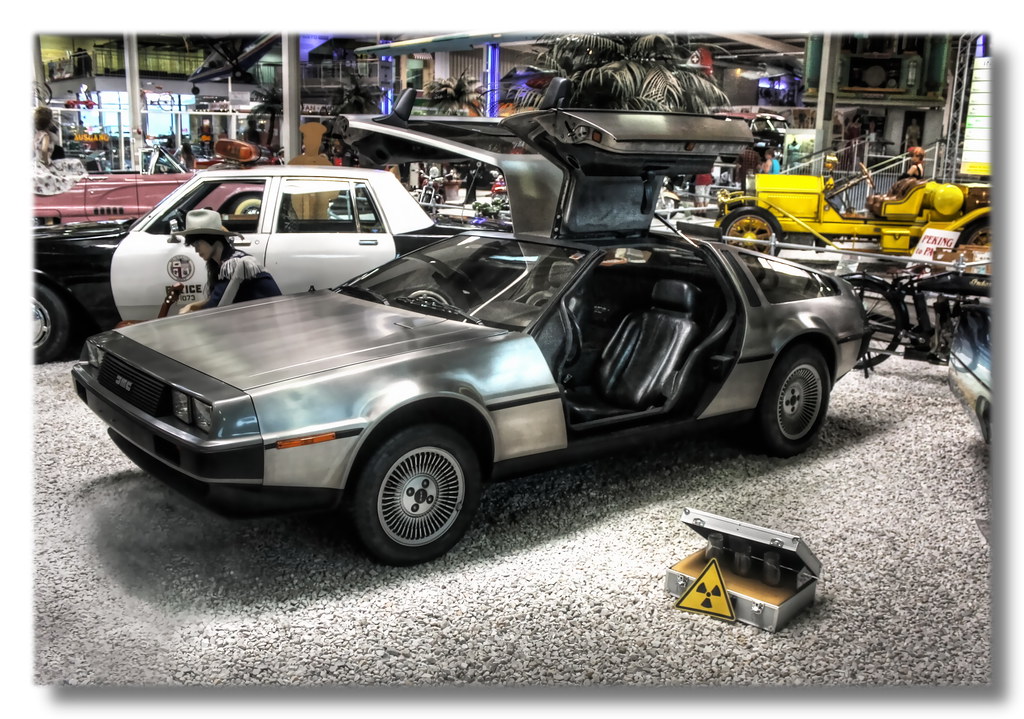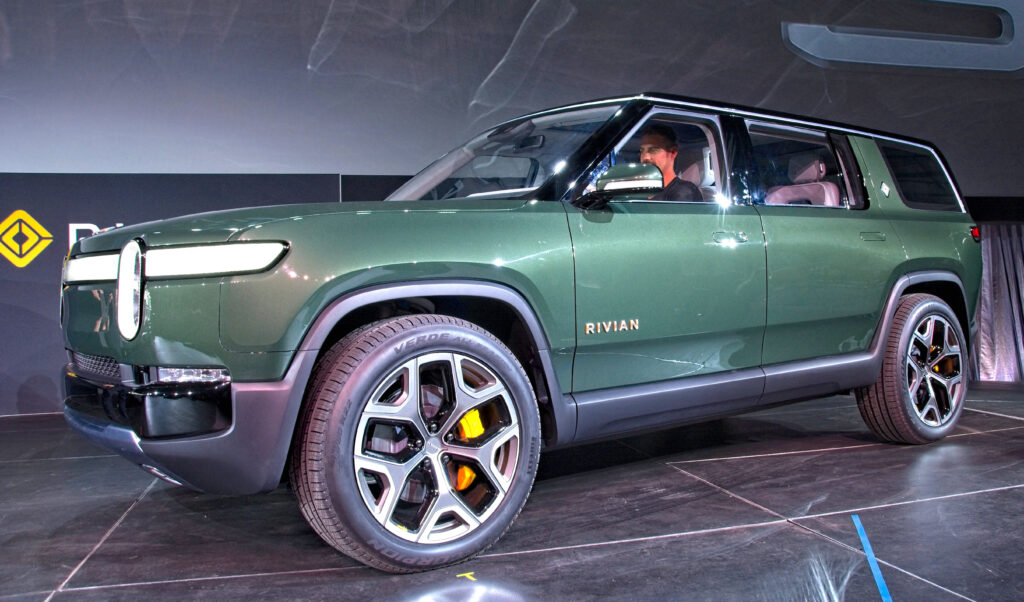
The automotive landscape of the 2010s presented a fascinating dichotomy, especially in America. While our nation often champions the grandiose—think sprawling trucks and expansive roads—the dawn of the decade witnessed a compelling surge in the popularity of smaller vehicles. This shift was more than a fleeting trend; it was a response to evolving economic realities and a growing appreciation for urban practicality.
Indeed, the 2010s saw a significant wave of compact cars making their mark on American shores. This phenomenon was perfectly timed with the onset of the Great Recession, which made Americans acutely aware of their budgets, particularly when it came to fuel costs. With gas prices spiking, the promise of thrifty fuel economy, easy parking, and affordable prices propelled compact hatchbacks into the spotlight, proving that bigger wasn’t always better, especially for navigating congested cityscapes.
Compact hatchbacks from this era were not merely economical; they embodied a smart blend of sporty styling, peppy engines, and an attractive Manufacturer’s Suggested Retail Price (MSRP) that appealed to a global audience. They represented a pragmatic choice for countless drivers seeking efficiency without sacrificing the joy of driving. We’re embarking on a journey to revisit some of the absolute masters of fuel economy and city street agility from the ’10s, starting with the very best.
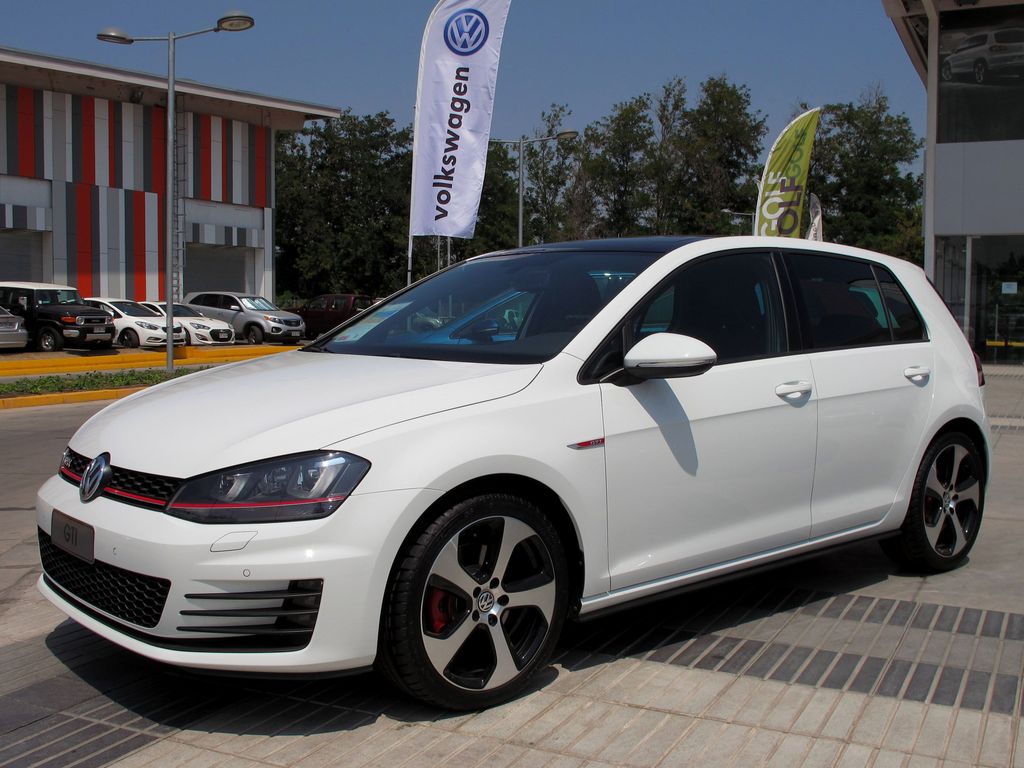
1. **2010 Volkswagen Golf TDI: The Diesel Efficiency Champion**When discussing the pinnacle of fuel efficiency in 2010, Volkswagen’s diesel engine technology undeniably stood out. The 2010 Volkswagen Golf TDI was a testament to this prowess, elegantly combining style with impressive economy. Outfitted with a 2.0-liter four-cylinder engine, this sophisticated hatchback was rated by the EPA to achieve a remarkable 30 mpg in the city and an even more impressive 42 mpg on the highway.
This outstanding performance positioned the Golf TDI as the second-most fuel-efficient non-hybrid vehicle for the year, surpassed only by the notably smaller Smart Fortwo. Its ability to deliver such figures cemented its reputation as a smart choice for drivers prioritizing minimal trips to the pump without compromising on the driving experience. The Golf TDI proved that efficiency didn’t have to mean a concession in refinement or road manners.
Beyond its stellar gas mileage, the 2010 Golf TDI also delivered unexpected vigor on the road. Thanks to a robust 236 lb-ft of torque, drivers experienced exceptional acceleration, making urban maneuvers and highway merging surprisingly spirited. This blend of torque and economy, combined with a comfortable interior, offered a compelling package, especially given its base MSRP of $23,690. It demonstrated that a compact, fuel-efficient car could still be genuinely engaging and well-appointed.
Car Model Information: 2020 Jeep Wrangler Sport
Name: Volkswagen Golf
Caption: Volkswagen Golf Mk8
Manufacturer: Volkswagen
Production: 1974–present
Class: Compact car
Predecessor: Volkswagen Beetle
Successor: Volkswagen ID.3
Alt: grey car (hatchback)
Categories: 1980s cars, 1990s cars, 2000s cars, 2010s cars, 2020s cars
Summary: The Volkswagen Golf () is a compact car/small family car (C-segment) produced by the German automotive manufacturer Volkswagen since 1974, marketed worldwide across eight generations, in various body configurations and under various nameplates – including as the Volkswagen Rabbit in the United States and Canada (Mk1 and Mk5), and as the Volkswagen Caribe in Mexico (Mk1).
The original Golf Mk1 was a front-engined, front-wheel drive replacement for the air-cooled, rear-engined, rear-wheel drive Volkswagen Beetle. Historically, the Golf is Volkswagen’s best-selling model and is among the world’s top three best-selling models, with more than 35 million units sold as of 2019.
Initially, most Golfs were hatchbacks, with the three-door version being somewhat more popular than the five-door. Other variants include an estate (Variant, from 1993), convertible (Cabriolet or Cabrio, from 1979), and a Golf-based saloon called the Jetta, Vento (from 1992), or Bora (from 1999). The Golf covers economy to high-performance market segments.
The Golf has won awards, including the World Car of the Year in 2009, with the Mk6 and in 2013 with the Mk7. Along with the Renault Clio and the Vauxhall Astra, the Golf is one of only three cars to have won European Car of the Year twice, in 1992 and 2013. The Golf has made the annual Car and Driver 10Best list multiple times. The Mk7 won the Motor Trend Car of the Year award in 2015, and the Mk1 GTI also won the award in 1985. The Mk4 won for the best-selling car in Europe in 2001.
Get more information about: Volkswagen Golf
Buying a high-performing used car >>>
Brand: Volkswagen Model: Golf TDI
Price: $25,000 Mileage: 54,707 mi.
Read more about: Beyond the Benchmark: 10 Long-Haul Diesels That Redefine Durability, Clocking Over 400,000 Miles Before Retirement
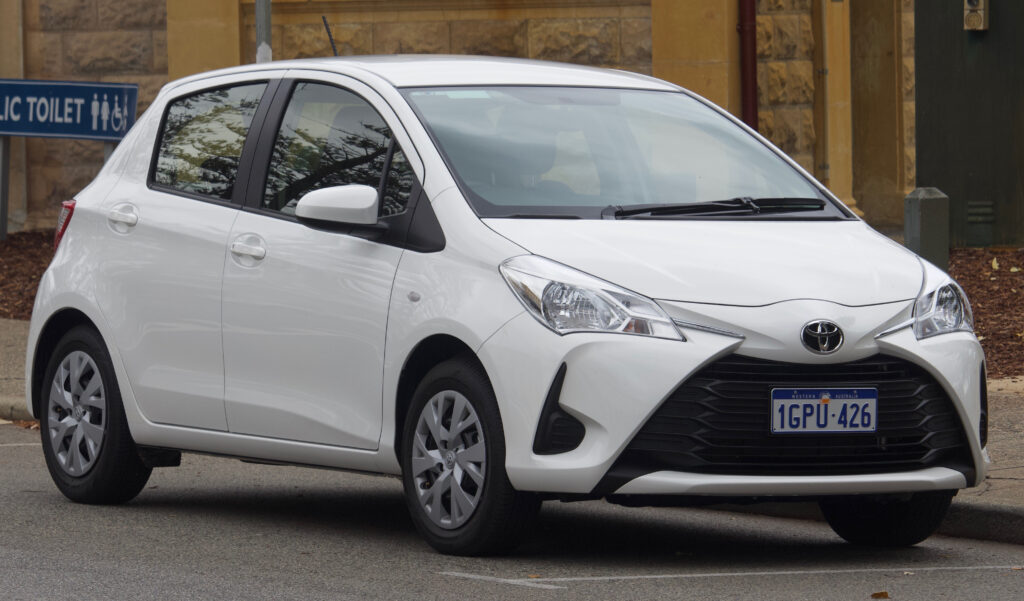
2. **2010 Toyota Yaris: Diminutive Proportions, Outsized Economy**The 2010 Toyota Yaris, with its decidedly diminutive proportions, was a prime example of how small size could translate into big savings at the fuel pump. This compact hatchback was engineered for efficiency, making it a compelling option for those seeking a budget-friendly commuter that excelled in urban environments. Its unpretentious design belied its practical capabilities.
Powering the Yaris was a 1.5-liter four-cylinder engine, a unit perfectly matched to its lightweight frame, allowing it to zip along with surprising agility. It earned an EPA-estimated 29 mpg in city driving and a respectable 36 mpg on the highway, culminating in a combined rating of 32 mpg. These numbers made it a top contender in its class for frugal operation, easing the financial burden of daily commutes.
Despite its compact exterior, Toyota’s engineers meticulously maximized interior cabin space, providing a fair amount of front-passenger comfort. This thoughtful design ensured that even on longer journeys, occupants could enjoy a reasonable degree of ease. With an entry price of just $11,550, the 2010 Yaris presented an incredibly accessible gateway to reliable, fuel-efficient transportation, solidifying its position as a go-to choice for economy-minded buyers.
Car Model Information: 2009 Toyota Yaris S
Name: Toyota Yaris
Caption: 2020 Toyota Yaris Design Hybrid (MXPH11, UK)
Manufacturer: Toyota
Aka: unbulleted list
Production: unbulleted list
Class: Supermini
BodyStyle: unbulleted list
Predecessor: unbulleted list
Categories: 2000s cars, 2010s cars, 2020s cars, All-wheel-drive vehicles, All articles containing potentially dated statements
Summary: The Toyota Yaris is a supermini/subcompact car sold by Toyota since 1999, replacing the Starlet and Tercel. Up to 2019, Toyota had used the Yaris nameplate on export versions of various Japanese-market models, with some markets receiving the same vehicles under the Toyota Echo name through 2005. Starting in 2020, the Yaris nameplate began to be used in Japan, which replaced the Vitz nameplate. The Yaris nameplate has also been applied to other vehicles. From 1999 to 2005, the nameplate had been used for the Yaris Verso mini MPV sold in Europe, where it was known in Japan as the FunCargo. Since 2020, the nameplate has also been used for the subcompact crossover SUV offering called Yaris Cross. In North America, most Yaris sedan models sold from 2015 to 2020 and Yaris hatchbacks sold from 2019 until 2020 were restyled versions of the Mazda2, produced and developed by Mazda. In 2020, Toyota introduced the GR Yaris, which is a three-door performance-oriented variant of the XP210 series Yaris using the Gazoo Racing branding. It is built as a homologation model for the FIA World Rally Championship. The name “Yaris” is derived from “Charis”, the singular form of Charites, the Greek goddesses of charm and beauty. As of March 2020, the Yaris has sold 8.71 million units worldwide.
Get more information about: Toyota Yaris
Buying a high-performing used car >>>
Brand: Toyota Model: Yaris
Price: $8,961 Mileage: 78,803 mi.
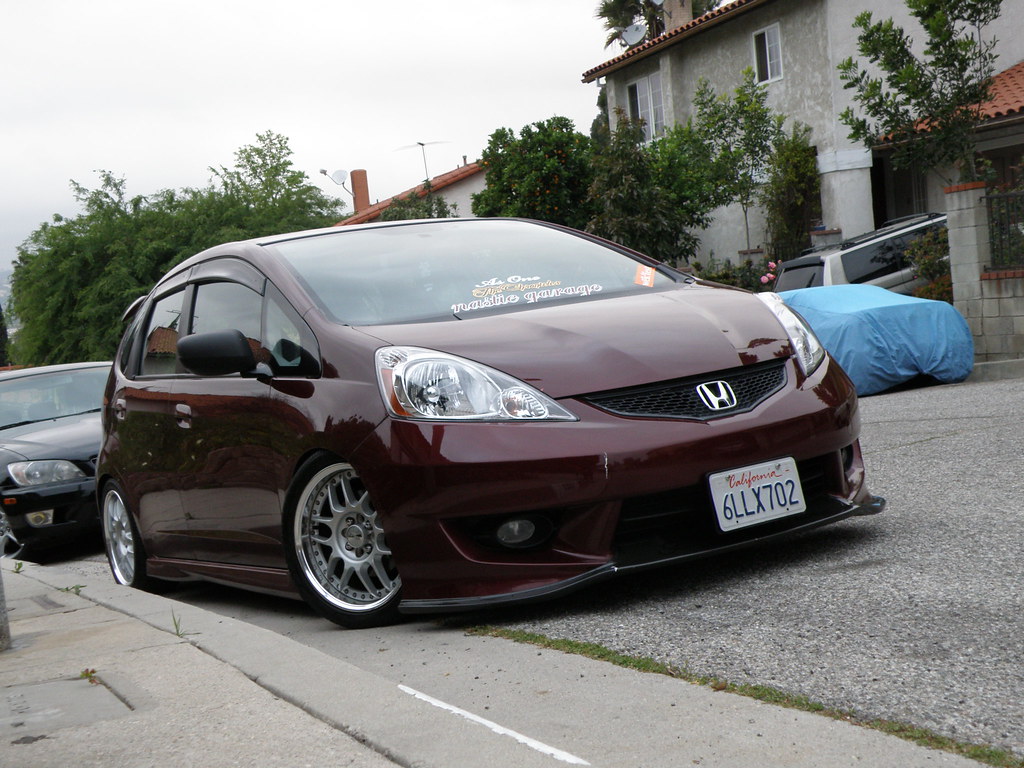
3. **2010 Honda Fit: Practicality Meets Engaging Dynamics**Honda’s compact Fit hatchback carved out a significant niche in the 2010s, offering a blend of impressive fuel efficiency, larger dimensions for its class, and a notably sportier character. It quickly became a favorite among drivers who desired practicality without sacrificing an engaging driving experience. The Fit’s clever packaging was a standout feature, enabling surprising versatility.
Under the hood, the 2010 Honda Fit featured a 1.5-liter four-cylinder engine that produced 117 horsepower. This powerplant, paired with an available Dual-Mode Paddle Shifter System, provided responsive acceleration and a dynamic feel often missing from other economy cars. It delivered an EPA-rated 28 mpg in the city and an impressive 35 mpg on the highway, showcasing its ability to balance performance with fuel consciousness.
Many found the 2010 Fit to be a more attractive option than competitors like the Toyota Yaris, citing its improved fit and finish, along with its sportier engine. Its larger dimensions translated into a surprisingly spacious and configurable interior, making it highly adaptable for various cargo and passenger needs. Starting at $14,900, the Honda Fit presented a strong value proposition for those seeking a versatile and enjoyable compact hatchback.
Read more about: Consumer Reports Insights: 12 Top SUVs Proven to Last Over 250,000 Miles for Unrivaled Long-Term Value
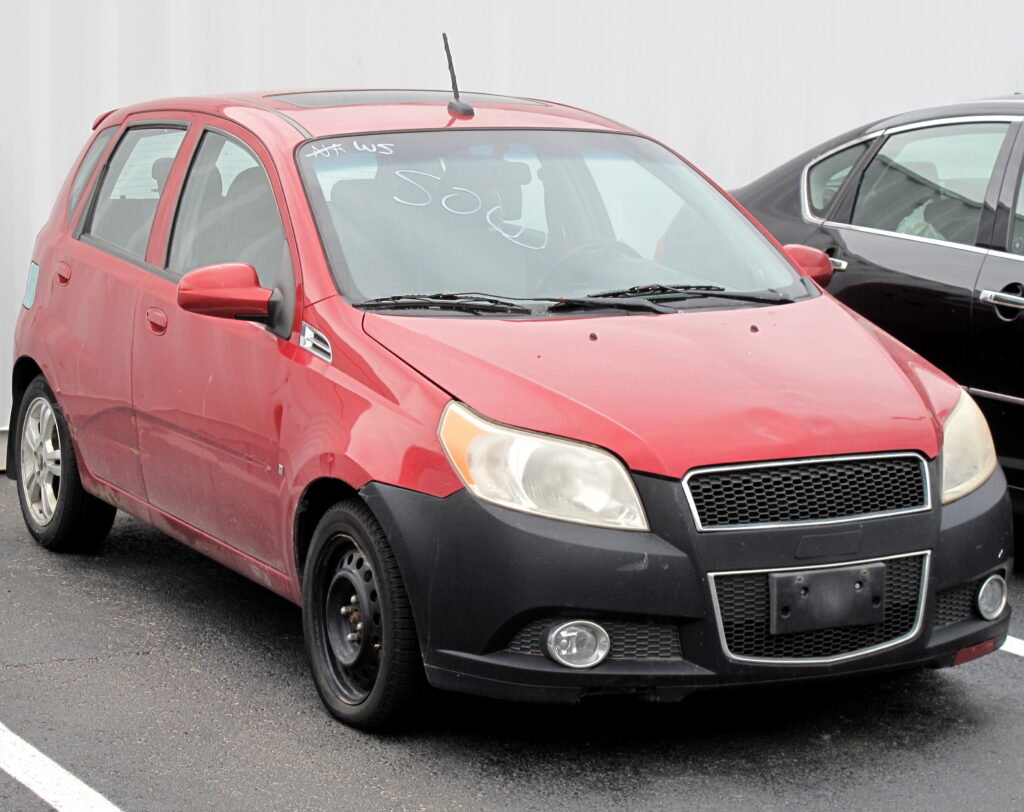
4. **2010 Chevrolet Aveo5: The Accessible City Companion**For drivers seeking straightforward, economical transportation in the 2010s, the Chevrolet Aveo5 hatchback offered a compelling solution. Positioned as a budget-friendly vehicle, it made the most of its small frame to deliver reliable service and commendable fuel efficiency. It was an entry point into compact car ownership, focusing on core automotive needs without unnecessary frills.
The Aveo5 was powered by a 103-horsepower engine, providing adequate motivation for city driving and modest highway cruising. It achieved an EPA-estimated 27 mpg in the city and 35 mpg on the highway, making it an economical choice for daily commutes. These figures underscored its mission as a car designed to keep running costs low, a significant draw for a wide segment of buyers.
With a base price of just $11,965, the 2010 Chevrolet Aveo5 was unapologetically a budget vehicle. While this meant not expecting much in the way of standard equipment, its fundamental reliability and affordability were its strongest suits. For those prioritizing an unpretentious, dependable, and efficient car to navigate urban landscapes, the Aveo5 stood as a highly practical and accessible option.
Having explored some of the initial frontrunners from the early 2010s, our journey into the realm of fuel-efficient and city-savvy compact hatchbacks continues. The automotive landscape of this era was rich with innovative small cars, each offering a unique blend of practicality, performance, and personality designed to navigate both tight urban streets and budget-conscious commutes with aplomb. These next four contenders further illustrate the diverse ways manufacturers approached the compact segment, proving that ‘small’ often translated into ‘smart’ for the discerning driver.
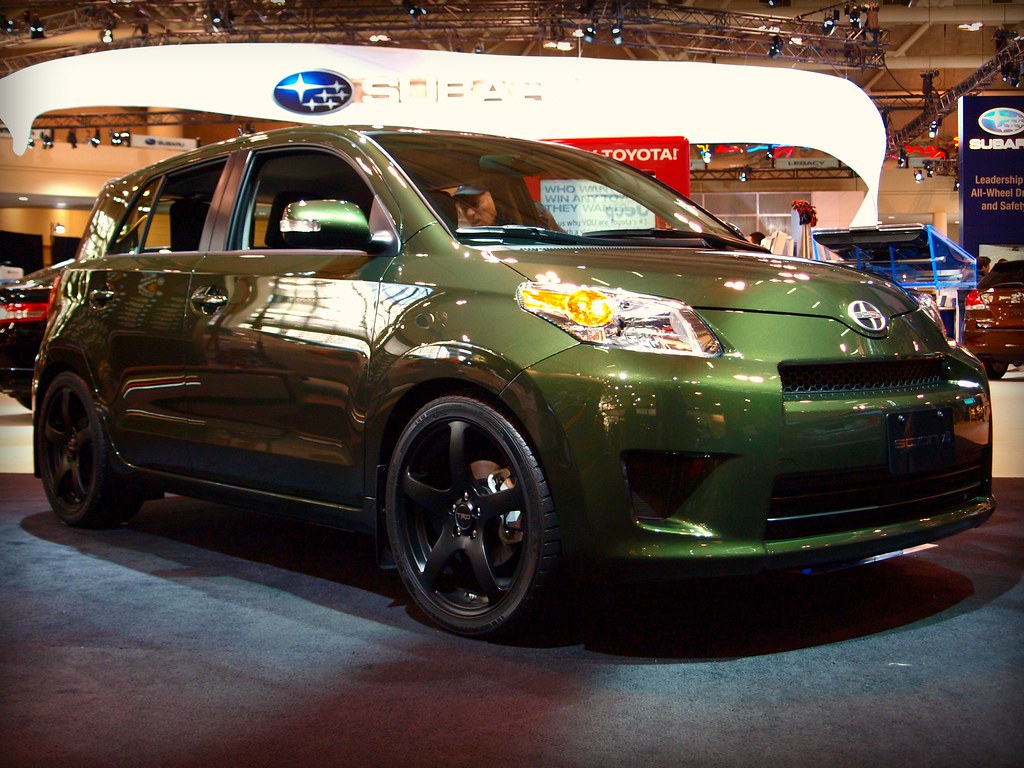
5. **2010 Scion xD: The Urban Customizer**The 2010 Scion xD entered the market as Toyota’s youth-oriented brand sought to inject a dose of economical excitement into the compact hatchback segment. While it shared a lineage with the more utilitarian Toyota Yaris, the xD was strategically positioned to offer more in terms of standard features, distinctive styling, and, crucially, a greater potential for personalization. This approach resonated with a demographic eager to make their vehicle an extension of their individual style without breaking the bank.
Under the hood, the Scion xD was motivated by a capable 1.8-liter four-cylinder engine. This powerplant delivered a balanced performance, ensuring it was peppy enough for urban sprints yet conservative at the pump. It boasted an EPA-estimated 27 mpg in city driving and a solid 33 mpg on the highway, culminating in a combined rating of 29 mpg. These figures cemented its status as a highly economical choice, particularly for daily commutes and city navigation where efficiency is paramount.
What truly set the Scion xD apart was its commitment to customization. With a starting price of $14,800, it aimed directly at the Honda Fit, offering a compelling alternative that emphasized unique aesthetics and an extensive catalog of dealer-installed accessories. This allowed owners to tailor their xD to an unprecedented degree, from exterior body kits to interior accents, making each vehicle feel distinctively their own and fostering a strong sense of individuality among drivers.
The xD’s styling, characterized by its sharp lines and boxy yet modern profile, was a deliberate departure from its more unassuming counterparts. It exuded a youthful energy that appealed to trend-conscious buyers seeking a vehicle that stood out from the crowd. This blend of reliability, affordability, and personal expression made the 2010 Scion xD a noteworthy contender in the competitive compact hatchback arena, showcasing that economy didn’t have to mean sacrificing flair.
Car Model Information: 2008 Scion xD Base
Name: Scion xD (XP110)
Caption: 2008 Scion xD (US)
Manufacturer: Toyota
Aka: unbulleted list
Production: 2007–2014
ModelYears: 2008–2014
Assembly: Kanegasaki, Iwate
Designer: Junho Kim and Masaaki Yagi (2005)
Class: Subcompact car
BodyStyle: hatchback
Layout: Front-engine, front-wheel-drive layout
Platform: Toyota B platform
Related: unbulleted list
Engine: Toyota ZR engine#2ZR-FE,Straight-four engine
Powerout: 128 hp
Abbr: on
Transmission: unbulleted list
Wheelbase: 2460 mm
Order: flip
Length: 3930 mm
Width: 1725 mm
Height: 1525 mm
Weight: 1210 kg
Predecessor: Scion xA
Successor: unbulleted list
Categories: 2010s cars, All articles with dead external links, Articles with dead external links from October 2010, Articles with short description, Cars discontinued in 2014
Summary: The Scion xD (also known as the Toyota Ist in Japan, and, as the Toyota Urban Cruiser in Europe and Latin America) is a subcompact hatchback that was marketed in the U.S. and Canada by Japanese manufacturer Toyota beginning with the 2008 model year, as a five-door subcompact hatchback — replacing the xA. The Scion xD and the second generation xB were first shown to the public on February 8, 2007 at the Chicago Auto Show.
xD Sales began in mid-2007 in the USA and in 2011 for Canada and was discontinued in 2014 — reaching just over 100,000 total.
Get more information about: Scion xD
Buying a high-performing used car >>>
Brand: Scion Model: xD
Price: $7,466 Mileage: 105,255 mi.

6. **BMW 118i Hatch (2007-11): Premium Agility for the Aspiring Driver**For many, the notion of a BMW as a “first car” might seem counterintuitive, typically associated with luxury and a higher price bracket. However, the BMW 118i Hatch from the 2007-11 generation presented a surprisingly accessible and exceptionally well-engineered option for discerning drivers entering vehicle ownership. It offered an undeniable step up in build quality, driving dynamics, and inherent safety features compared to many of its contemporary compact rivals.
This 1 Series model truly set itself apart with its meticulously crafted build and premium interior trim. Designed to endure, these vehicles, with proper care, still retain a high level of aesthetic and structural integrity even after two decades on the road. The suspension, braking system, and overall chassis engineering were all top-tier for its class, delivering a refined and engaging driving experience that was distinctly BMW.
A significant differentiator for the 118i Hatch was its rear-wheel-drive configuration—a rarity in the compact hatchback segment, where front-wheel-drive or all-wheel-drive layouts are far more common. This engineering choice contributed to its sporty handling and balanced feel. Power came from a 100kW engine, often paired with BMW’s excellent six-speed automatic transmission, though a manual option was also available for those who preferred a more direct connection to the road.
Safety was another hallmark of the 118i. Despite its age, its comprehensive array of airbags and robust inherent safety features were outstanding, earning it a five-star ANCAP safety rating. This commitment to occupant protection provided a crucial layer of confidence for drivers and passengers alike. While many examples typically covered fewer than 10,000 kilometers annually, a thorough inspection of service books and history remains prudent to ensure its continued well-being and performance for its next owner.
Car Model Information: 2020 Jeep Wrangler Sport
Name: BMW 1 Series
Manufacturer: BMW
Production: 2004–2013
ModelYears: 2005–2011 (up to 2013 for coupe and convertible)
Assembly: Leipzig
Class: Compact executive car
BodyStyle: coupe
Layout: Front-engine, rear-wheel-drive
Platform: BMW L2
Related: BMW Z4 (E89),BMW 3 Series (E90)
Engine: BMW N46,Straight-four engine
Transmission: GM 6L50 transmission,Automatic transmission
Wheelbase: 2660 mm
Abbr: on
Length: convert
Width: convert
Height: convert
Weight: convert
Predecessor: BMW 3 Series Compact
Successor: BMW 1 Series (F20)
Designer: Peter Gabath, Marc Michael Markefka (E82)
ModelCode: E81 (3-door hatchback),E82 (coupe),E87 (5-door hatchback),E88 (convertible)
Categories: 2010s cars, All articles with unsourced statements, Articles with short description, Articles with unsourced statements from May 2013, BMW vehicles
Summary: The first generation of the BMW 1 Series consists of the BMW E81 (3-door hatchback), BMW E82 (coupe), BMW E87 (5-door hatchback) and BMW E88 (convertible) compact cars. The E81/E82/E87/E88 generation was produced from 2004 until 2013 and is sometimes collectively referred to as the E8x. The E8x replaced the 3 Series Compact as the entry-level models of the BMW range.
The chassis has an aluminum multi-link suspension, and a rear-wheel drive layout with a longitudinally-mounted engine giving 50:50 weight balance, which was a rare configuration for a hatchback as most cars in this market segment use front-wheel drive. The engines available were four-cylinder turbo-diesel, four-cylinder naturally aspirated petrol, six-cylinder naturally aspirated petrol and six-cylinder turbocharged petrol (the latter only available on coupe and convertible models).
The highest performance trim is the 1 Series M Coupé which was powered by the BMW N54 turbocharged inline-six engine mated to a six-speed manual transmission. It was produced in only the coupe body style and is considered the predecessor to the BMW M2.
Following the introduction of the F20/F21 1 Series in 2011, the E81/E87 hatchback models began to be phased out, while the E82/E88 coupes and convertibles remained in production until 2013, when they were replaced by the F22/F23 2 Series models.
Get more information about: BMW 1 Series (E87)
Buying a high-performing used car >>>
Brand: BMW Model: 118i Hatch
Price: $25,000 Mileage: 54,707 mi.
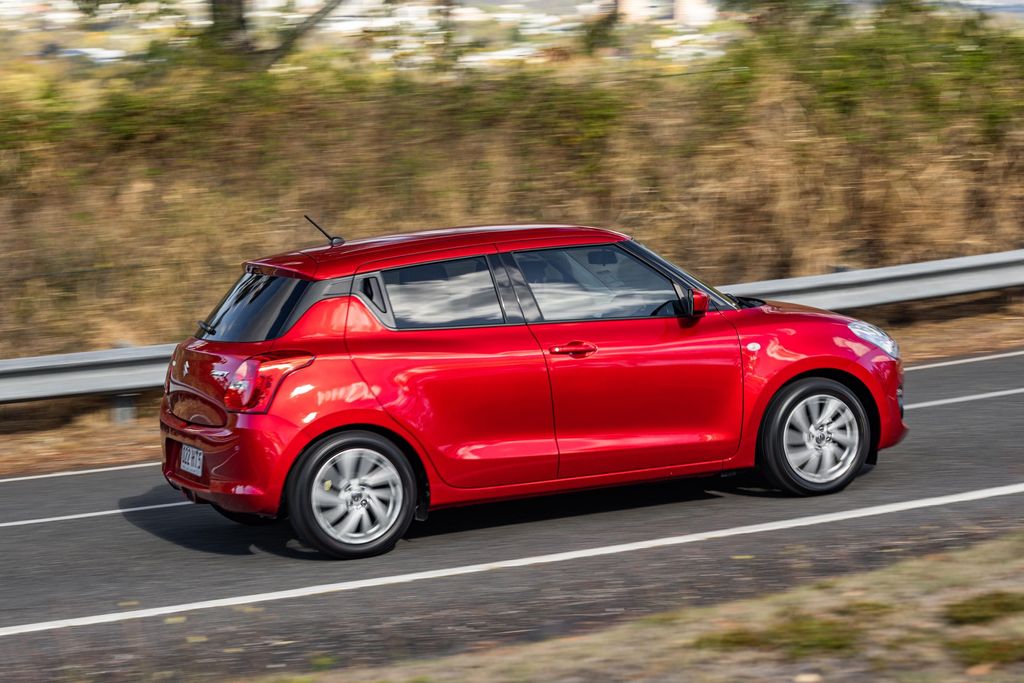
7. **Suzuki Swift (2011-17): The Endearing City Companion**The Suzuki Swift, especially the FZ versions produced between 2011 and 2017, carved out a significant niche as an endearing and highly practical compact hatchback. It appealed to a wide audience seeking a vehicle that combined cute, compact aesthetics with a host of convenient features. With its reputation for reliability, a good stereo system, and air-conditioning capable of freezing fingers, it became a beloved choice for urban living and for younger singles in particular.
Beneath its charming exterior, the FZ series Swift featured a modernized 1.4-liter engine. While this iteration produced slightly less power than earlier models, it excelled in delivering impressive fuel economy. Specifically, the five-speed manual Swift GLX achieved a combined-cycle fuel consumption average of 7.2L/100km, making it an exceptionally economical vehicle to run. This efficiency, combined with its compact dimensions, made it an ideal partner for navigating congested city streets and tight parking spaces.
Beyond its economical operation, the Swift GLX offered a surprising array of features for its class. It came equipped with four-wheel disc brakes, stylish 16-inch alloy wheels, a comfortable leather-bound steering wheel, and climate control air-conditioning, enhancing both the driving experience and passenger comfort. The four-door configuration provided easy access, and the rear seat was spacious enough to comfortably accommodate two adults or three children, demonstrating thoughtful interior packaging.
However, a practical consideration for the Swift, particularly for families, was its compact boot space, which was not typically large enough to accommodate a pram. This characteristic underscored its primary appeal as economical transport for younger individuals or couples without small children. Prospective buyers of a used Swift are advised to scrutinize its service history diligently, as previous owners who may have neglected fluid levels or regular servicing could create potential long-term issues, though its fundamental reliability remains strong with proper care.
Car Model Information: 2001 Suzuki Swift GL
Name: Suzuki Swift
Caption: Fourth generation Suzuki Swift
Manufacturer: Suzuki
Production: September 2004 – present,Nameplate first used in 1984
Class: Supermini,Subcompact,Hot hatch
BodyStyle: hatchback,5-door hatchback (2004–present)
Layout: Front-engine, front-wheel-drive layout,Four-wheel-drive
Predecessor: Suzuki Cultus#SF,Suzuki Cultus Crescent
Sp: us
Categories: 2010s cars, 2020s cars, ANCAP superminis, ASEAN NCAP superminis, All-wheel-drive vehicles
Summary: The Suzuki Swift is a supermini car (B-segment) produced by Suzuki. The vehicle is classified as a B-segment marque in the European single market, a segment referred to as a supermini in the British Isles. Prior to this, the “Swift” nameplate had been applied to the rebadged Suzuki Cultus in numerous export markets since 1984. The Swift became its own model in 2004. Currently, the Swift is positioned between Ignis and Baleno in Suzuki’s global hatchback lineup. Since its introduction as a global model in 2004, the Swift has been sold 10 million units As of September 2025.
Get more information about: Suzuki Swift
Buying a high-performing used car >>>
Brand: Suzuki Model: Swift
Price: $2,798 Mileage: 122,890 mi.
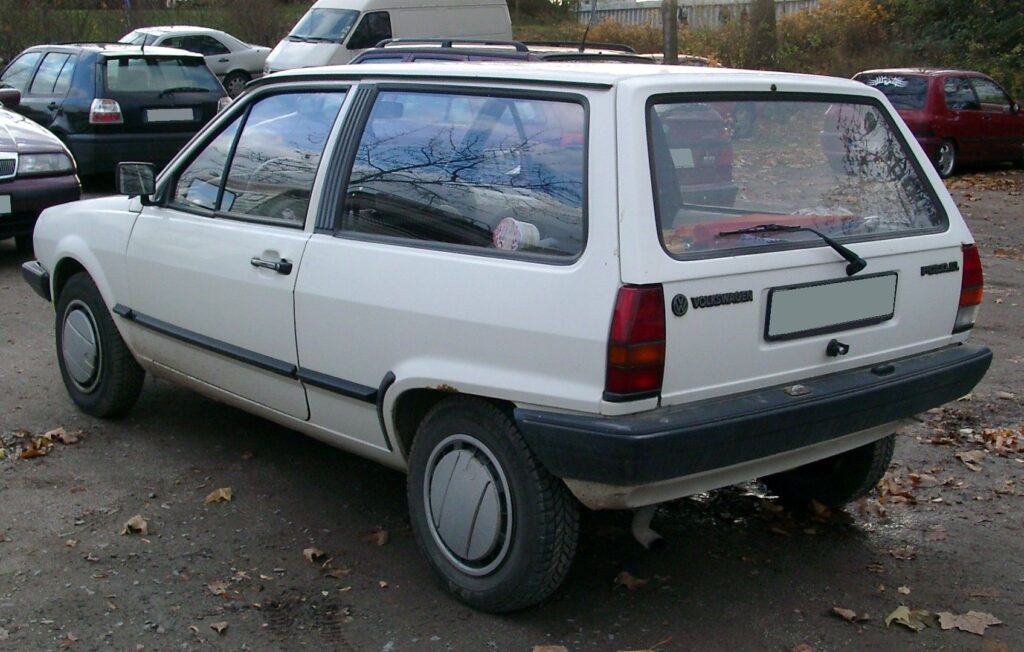
8. **Volkswagen Polo 77TSi (2010-14): The Subcompact with Substance**The Volkswagen Polo 77TSi, from the 2010-14 6R Series, represented a compelling proposition in the compact hatchback segment, offering a level of sophistication and driving integrity often associated with larger, more expensive vehicles. While Volkswagen’s DSG transmission of this era had its well-documented issues, with known fixes now available, the Polo’s overall excellence in other crucial respects made it simply too good to overlook for those seeking a premium small car experience.
Remarkably, for a vehicle weighing less than 1100 kilograms, the Polo 6R Series exuded an extraordinary sense of solidity and robustness. This impressive build quality translated into a remarkably composed ride, even on rougher rural roads or graded gravel tracks, where the little VW proved surprisingly capable and comfortable. The Comfortline variant, with its judiciously chosen 55-profile tires, provided an ample layer of cushioning between challenging road surfaces and the occupants, enhancing overall ride comfort.
Powering the Polo 77TSi was a turbocharged 1.2-liter engine that produced a respectable 77kW. This modest output, when paired with the car’s exceptionally light curb weight of just 1048kg, resulted in a superb balance of performance and economy. The manual transmission variant could achieve 0-100km/h in a spirited 9.7 seconds, while fuel consumption averaged an impressive 6.2 litres/100km, even managing around 8L/100km in demanding city driving conditions.
For those considering a semi-automatic VW from this period, it remains a wise decision to have the vehicle thoroughly assessed by a specialist before finalizing a purchase, particularly concerning the DSG transmission. Despite this cautionary note, the Volkswagen Polo 77TSi consistently proved its mettle as a highly capable, efficient, and surprisingly refined compact hatchback, making it a standout choice for enthusiasts who appreciated a smaller car with big car virtues and a truly solid feel.
As we conclude our retrospective on these compact titans of the 2010s, it’s clear that their impact on the automotive world, particularly in urban environments, was profound. These eight vehicles – from the diesel-powered efficiency king to the premium German compact, and the practical Japanese and Korean offerings – showcased a remarkable evolution in design, engineering, and consumer focus. They proved that downsizing didn’t mean sacrificing capability, enjoyment, or style. Indeed, for many drivers, these compact hatchbacks weren’t just economical choices; they were the absolute masters of navigating the intricate dance of city life, offering a blend of fuel economy, agility, and surprising character that continues to resonate with enthusiasts and practical drivers alike. They perfectly captured the spirit of a decade that learned to appreciate the power of efficiency and the undeniable charm of a well-engineered small car.

